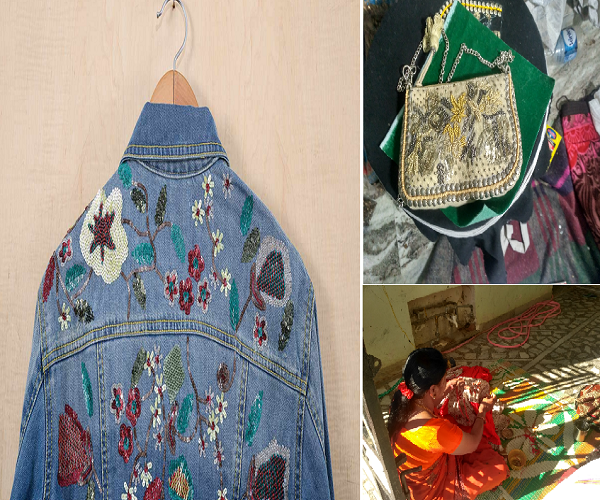For little more than pennies per hour, in homes across India, some of the country’s most vulnerable women and girls do tasks such as embroidery, beading, and lacework, making fringes or tassels, snipping threads, and stitching button holes on garments for big international fashion brands. Many shoppers, however, probably don’t even realize these workers exist.
In-depth new research led by Siddharth Kara, an author and expert on contemporary slavery, offers a comprehensive investigation into the lives of more than 1,000 of these women and girls.
Between October 2017 and April 2018, the researchers documented 1,452 home-based garment workers in parts of northern and southern India. Nearly all were female, and more than 99%, it turned out, were either Muslim or part of a low Hindu caste, meaning the workers were almost all marginalized members of their communities.
For many, the jobs were essential to their survival. In northern India, where most of the workers were located, about 76% started home-based work due to “some form of duress,” including severe financial hardship, family pressure, or lack of alternative income. It could be taboo for them to even leave the home unaccompanied by a man.
For their labor, tallied on a piece rate, these workers typically received the equivalent of about $0.13 to $0.15 per hour. “In fact, most workers received between 50% and 90% less than the state-stipulated minimum wages,” the report notes.
“This is not a survivable income, even in the most destitute manifestation of survival,” Kara says in an interview.
More than half the workers in northern India started work while still minors. “My parents could not afford fees for school, so I do this work instead,” one 13-year-old worker quoted in the report says. About 7% of the workers studied toiled under conditions of forced labor as defined by international law.
And far from being disconnected from shoppers in the West, about 85% of them worked on garments meant for export to the US or Europe.
Shoppers in those regions may rarely, if ever, hear about homeworkers. They tend to be practically invisible, and there aren’t solid counts of how many there are. According to Kara, the best estimate is “several million” in India, but more specific than that nobody can accurately say.
Even the brands they’re producing for may not be fully aware they’re in their supply chains, due to the practice of subcontracting: A brand contracts a factory to produce a number of garments, and then the factory, unable to complete the work itself or seeing a cheaper alternative, subcontracts it to someone else—in this case a homeworker with little bargaining power and dire need of income. A local subcontractor in a village will deliver the garments and raw materials to the worker and come back later to pick up the finished orders.
Still, brands tend to know these conditions exist. “You name any brand and they are doing stuff,” Sanjay Kumar, the director of SEWA Bharat, part of a national trade union representing informal workers, including some homeworkers, told n 2015. The union had set up a unique company that contracts directly between brands and homeworkers to create a mutually beneficial arrangement.
The new report doesn’t call out any brands explicitly. Kara explains that the goal wasn’t to name and shame these companies, which he says are “household names that you and I would recognize.” He doesn’t want the public scrutiny to scare them into cutting off suppliers that have been subcontracting to homeworkers, potentially depriving those workers of wages vital to their survival.
Instead, the goal is to get brands to start paying attention, and to take steps to make sure homeworkers are being properly paid and protected. Most home-based garment workers aren’t in a union, for instance. None in the new report were, nor did any of them have a written contract, leaving them particularly susceptible to exploitation. Beyond being severely underpaid, they could be harmed further by subcontractors who might pay them late, or threaten them in other ways.
The report recommends that home-based workers get their own garment-specific union, that they start to receive written contracts, that they be properly monitored to ensure they’re earning proper wages, and that the extraordinarily vulnerable women and girls who comprise most of these workers receive education and skills training to empower them.
It’s the brands, because of their size and leverage with suppliers, that “are best positioned to address the findings of this report on a meaningful scale and thereby substantially improve conditions for home-based garment workers in India,” the report states. #KhabarLive







